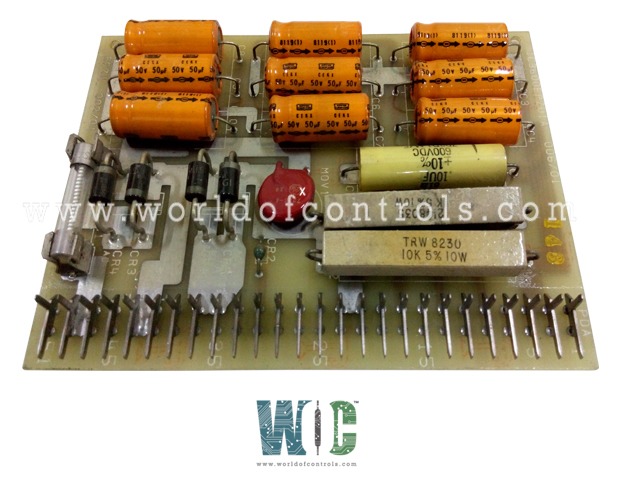
World Of Controls understands the criticality of your requirement and works towards reducing the lead time as much as possible.
IC3600EPSX1E1C - Voltage Regulator Circuit Board is available in stock which ships the same day.
IC3600EPSX1E1C - Voltage Regulator Circuit Board comes in UNUSED as well as REBUILT condition.
To avail our best deals for IC3600EPSX1E1C - Voltage Regulator Circuit Board, contact us and we will get back to you within 24 hours.
SPECIFICATIONS:
Part Number: IC3600EPSX1E1C
Manufacturer: General Electric
Series: Mark I & II
Product Type: Voltage Regulator Circuit Board
Number of relay channels: 12
Power supply voltage: 28 V dc
Technology: Surface mount
Redundancy: Type Simplex, Dual, TMR
Operating temperature: -40 to +70°C
Size: 15.9 cm high x 17.8 cm
Weight: 0.8kg
Repair: 3-7 Day
Availability: In Stock
Country of Origin: United States
FUNCTIONAL DESCRIPTION:
IC3600EPSX1E1C is a Voltage Regulator Circuit Board manufactured and designed by General Electric as part of the Mark I & II Series used in GE Speedtronic Turbine Control Systems. A voltage regulator circuit board is designed to ensure a stable and consistent voltage output, crucial for protecting sensitive electronic components from fluctuations in input voltage or load changes. At its core, the board features a voltage regulator integrated circuit (IC), such as a linear regulator like the 7805 for a fixed 5V output or a switching regulator like the LM2596 for adjustable outputs. Input capacitors, typically electrolytic, are used to smooth out the incoming voltage and filter noise, while output capacitors, often a mix of electrolytic and ceramic types, stabilize the voltage and reduce ripple. For switching regulators, an inductor is included to help with filtering and energy storage. Diodes, such as Schottky diodes, protect against voltage spikes and reverse polarity. In high-current applications, a heat sink might be necessary to prevent the regulator from overheating. Additionally, resistors in adjustable regulators are used to set the output voltage by providing feedback. Proper PCB layout is essential, with attention to short input and output traces and effective grounding, to minimize noise and ensure reliable operation.
FUNCTIONS:
WOC has the largest stock of OEM replacement parts for GE Speedtronic Control Systems. We can also repair your faulty boards and supply unused and rebuilt boards backed up with a warranty. Our team of experts is available round the clock to support your OEM needs. Our team of experts at WOC is happy to assist you with any of your automation requirements. For pricing and availability on parts and repairs, kindly contact our team by phone or email.
What is the primary function of a voltage regulator circuit board?
The primary function of a voltage regulator circuit board is to maintain a constant output voltage regardless of variations in input voltage or load conditions. This is achieved through feedback mechanisms that adjust the regulator's internal resistance or duty cycle to stabilize the output.
How does a switching voltage regulator differ from a linear regulator?
A switching voltage regulator uses an inductor, switch, and diode to convert excess energy more efficiently compared to linear regulators. It operates by rapidly switching the transistor on and off, storing energy in the inductor, and then releasing it to the output. This method is more efficient but can introduce switching noise and requires careful design to manage electromagnetic interference (EMI).
What is load regulation, and why is it important?
Load regulation refers to the ability of a voltage regulator to maintain a constant output voltage despite changes in the load current. It is crucial because fluctuations in load current can otherwise cause variations in output voltage, which can affect the performance and reliability of connected components.